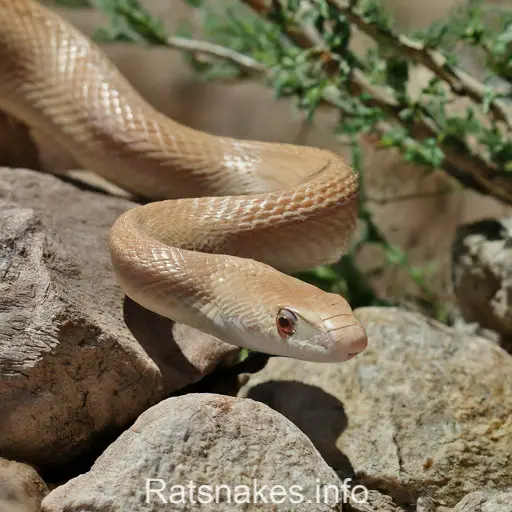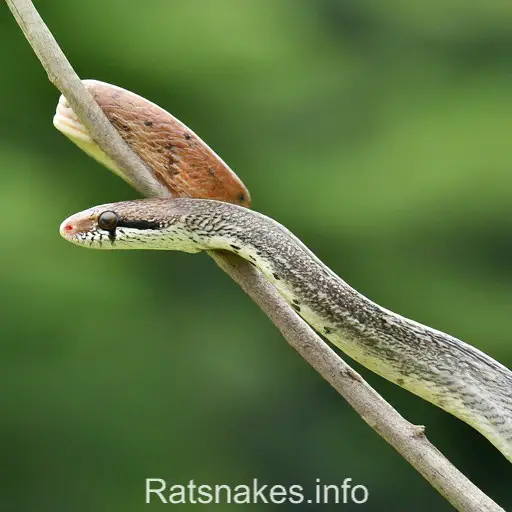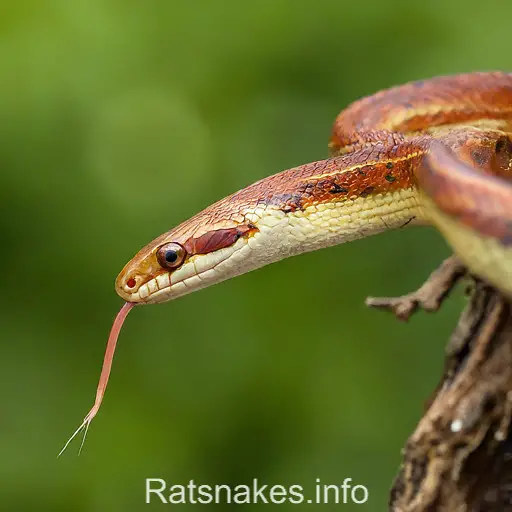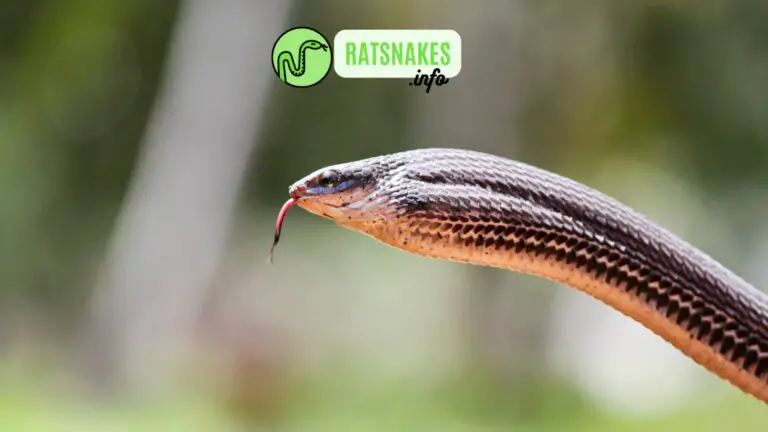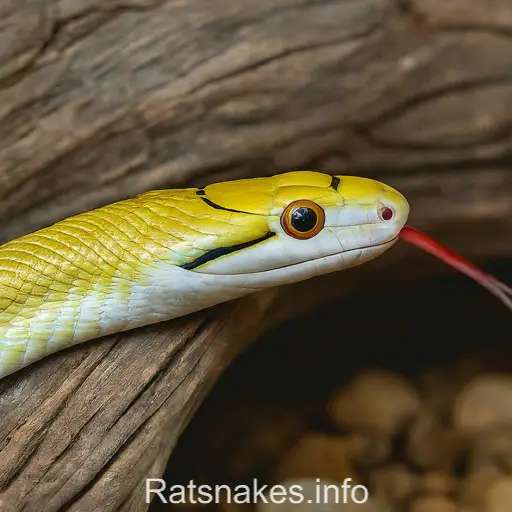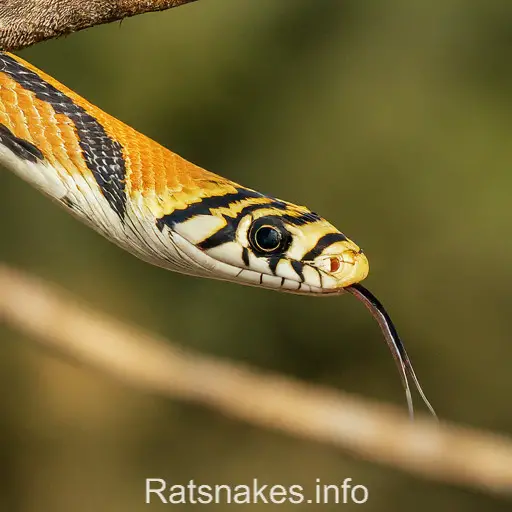
Are you intrigued by the mesmerizing world of reptiles? Join us as we delve into the fascinating realm of the Great Plains Rat Snake (Pantherophis emoryi). Known for its striking appearance and elusive nature, this species captivates both seasoned herpetologists and nature enthusiasts alike. With its unique coloration and impressive adaptability, the Great Plains Rat Snake stands out as a remarkable creature in the vast expanse of the North American plains.
As we explore the characteristics and behavior of the Pantherophis emoryi, we uncover a wealth of intriguing facts about this enigmatic snake. From its preferred habitats to its feeding habits, there is much to learn about this elusive species. Join us on a journey of discovery as we unravel the mysteries surrounding the Great Plains Rat Snake and gain a deeper understanding of its importance in the delicate balance of the ecosystem.
Overview of Great Plains Rat Snake
When it comes to the Great Plains Rat Snake, we’re dealing with a serpent that stands out for various reasons. This species, scientifically known as Pantherophis emoryi, boasts a striking appearance marked by its distinctive pattern of alternating blotches along its back. These non-venomous colubrid snakes are a common sight in the grasslands and prairies of North America, residing in areas with adequate cover and food sources.
The elusive nature of the Great Plains Rat Snake adds an air of mystery to its presence in the wild. Known for their nocturnal habits and secretive behavior during the day, these snakes are often challenging to spot despite their relatively large size. Their adaptability to various environments, from grasslands to farmlands, showcases their resilience in navigating human-altered landscapes.
In the realm of feeding habits, the Great Plains Rat Snake demonstrates a diverse palate. From rodents and birds to eggs and small amphibians, these snakes play a crucial role in controlling pest populations and contributing to the balance of their ecosystems. Their preference for rodent prey has earned them the title of efficient pest controllers, aiding in the natural regulation of rodent numbers in their habitats.
Overall, the Great Plains Rat Snake encompasses a fascinating blend of characteristics that make it an essential component of the North American plains. From its unique appearance to its role in the ecosystem, delving into the world of this species unravels a tapestry of wonders waiting to be explored.
Physical Characteristics
When we delve into the physical characteristics of the Great Plains Rat Snake (Pantherophis emoryi), we encounter a fascinating array of features that define this species. Here are some noteworthy traits that set this snake apart:
- Coloration: The Great Plains Rat Snake displays a beautiful blend of colors, typically ranging from gray to brown, sometimes with a reddish hue. Its back is adorned with a series of alternating dark blotches, creating a striking visual pattern.
- Size: Adults of this species usually measure between 3 to 5 feet in length, with females generally larger than males. Despite its size, this snake is slender and agile, enabling it to swiftly traverse its grassland habitat.
- Scales: The scales of the Great Plains Rat Snake are smooth and glossy, contributing to its sleek appearance. These scales aid in its movement and provide protection from external elements.
Understanding these physical characteristics gives us valuable insights into the unique makeup of the Great Plains Rat Snake, emphasizing its adaptability and evolutionary traits that have allowed it to thrive in diverse environments.
Habitat and Distribution
When it comes to habitat, the Great Plains Rat Snake showcases remarkable adaptability. This species is commonly found in a variety of environments, including grasslands, forests, and farmlands. While they prefer areas with ample vegetation and access to water sources, they can also thrive in more arid regions. This adaptability contributes to their widespread distribution across various landscapes.
In terms of geographical distribution, the Great Plains Rat Snake primarily resides in the central regions of the United States. Their range extends from Texas and Oklahoma in the south to Kansas, Nebraska, and Iowa in the north. These snakes have also been spotted in parts of Missouri, Arkansas, and Louisiana, showcasing their ability to inhabit diverse terrains.
Great Plains Rat Snakes are known to seek out shelter in underground burrows, rock crevices, and even abandoned burrows of other animals. This behavior aids in their protection and survival in different habitats. Their distribution pattern reflects their ability to adapt to a range of environmental conditions, making them a successful species in the wild.
Behavior and Diet
When it comes to behavior, the Great Plains Rat Snake is primarily nocturnal, meaning it is most active during the night. This behavior helps them avoid extreme daytime temperatures and potential predators. These snakes are known for being excellent climbers, utilizing their skill to search for prey in trees and shrubs. They are opportunistic feeders, preying on a variety of small animals such as rodents, birds, eggs, and even insects. Their ability to consume a diverse range of prey contributes to their adaptability in different environments.
Diet plays a crucial role in the health and survival of these snakes. Rodents make up a significant portion of their diet, helping control rodent populations in their habitats. By consuming rodents, the Great Plains Rat Snake indirectly benefits the ecosystem by keeping these populations in check, thus maintaining a balance in the food chain. Their diet also includes birds and their eggs, contributing to the overall biodiversity of their surroundings.
These snakes are non-venomous, relying on constriction to subdue their prey before ingesting it whole. Their hunting strategy involves ambushing their prey and overpowering them with their strength. With their adaptable diet and climbing abilities, the Great Plains Rat Snake demonstrates a resourceful approach in securing food sources in diverse landscapes.
Conservation Status
When it comes to the Conservation Status of the Great Plains Rat Snake, also known as Pantherophis emoryi, we have some good news. Currently, this species is listed under the Least Concern category by the International Union for Conservation of Nature (IUCN).
Here are some key points that contribute to the positive conservation status of these snakes:
- Wide Distribution: The Great Plains Rat Snake has a large geographic range, spanning across various regions in North America.
- Generalist Diet: Their diverse diet allows them to adapt to various environments and food sources, reducing the impact of changes in prey populations.
- Adaptability: These snakes have shown remarkable adaptability in behavior and habitat preferences, making them less vulnerable to habitat loss and modification.
- Population Stability: Their populations are currently believed to be stable, with no significant threats causing a decline in numbers.
By understanding and appreciating the unique features of the Great Plains Rat Snake, we can continue to support their conservation efforts and ensure their presence in our ecosystems.
Key Takeaways
- The Great Plains Rat Snake, scientifically known as Pantherophis emoryi, is a non-venomous colubrid snake that inhabits the grasslands and prairies of North America.
- These elusive snakes have nocturnal habits, an adaptive diet that includes rodents and birds, and play a crucial role in controlling pest populations in their ecosystems.
- Physical characteristics of the Great Plains Rat Snake include a coloration ranging from gray to brown with dark blotches, a size of 3-5 feet in length, and smooth, glossy scales.
- Their habitat extends from grasslands to forests and farmlands, showcasing their adaptability and distribution across central regions of the United States.
- The Great Plains Rat Snake is listed as Least Concern by the IUCN due to factors such as wide distribution, generalist diet, adaptability, and stable populations.
Conclusion
The Great Plains Rat Snake, Pantherophis emoryi, stands out as a resilient species with a vital role in maintaining ecological balance. Its adaptability and widespread distribution make it a valuable asset in controlling rodent populations. By understanding and valuing their significance, we can contribute to their conservation efforts and ensure their continued presence in our ecosystems. Let’s appreciate the unique features of these snakes and support initiatives that protect their habitats. Together, we can help preserve the Great Plains Rat Snake and its crucial role in sustaining the delicate harmony of our natural world.

